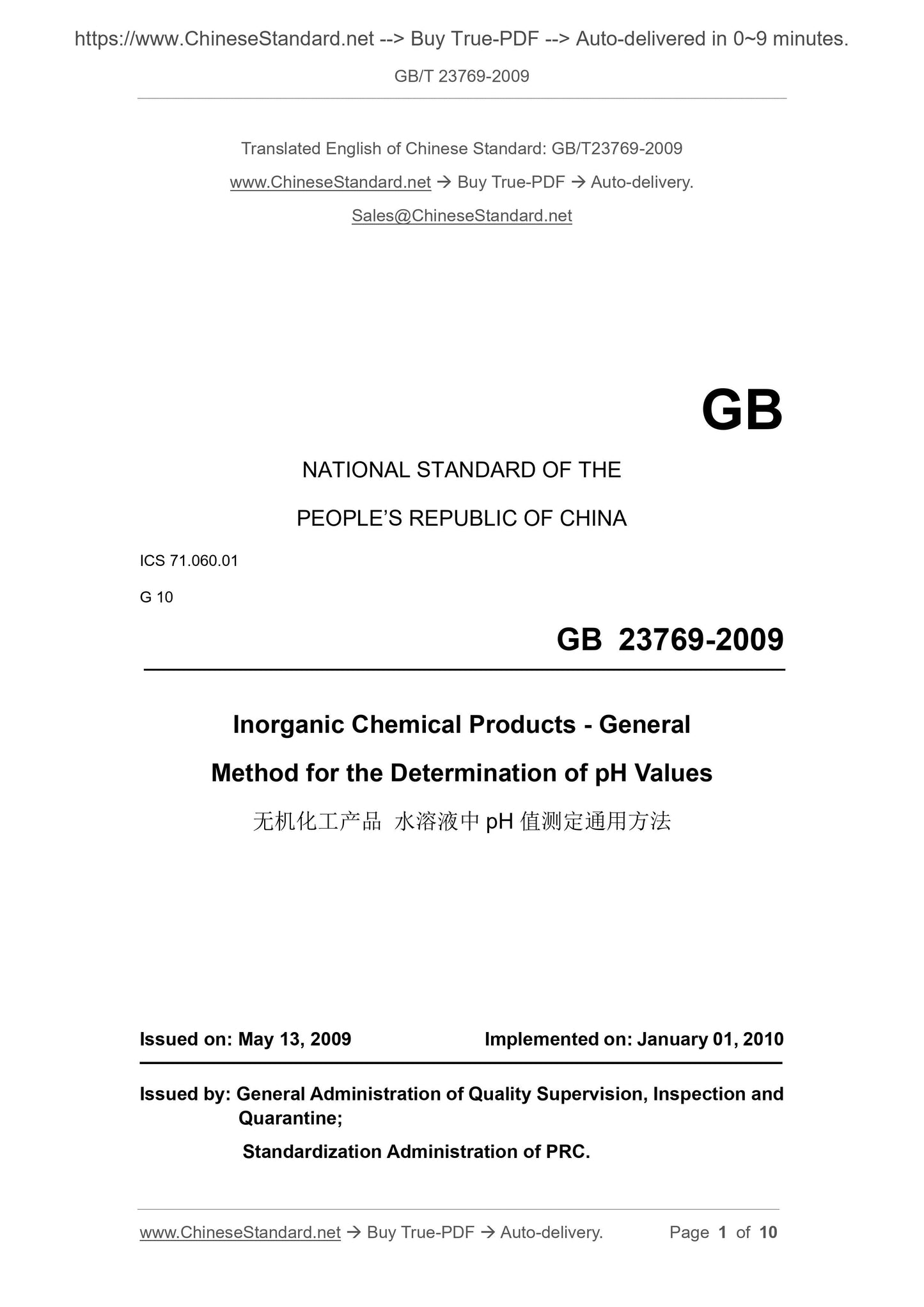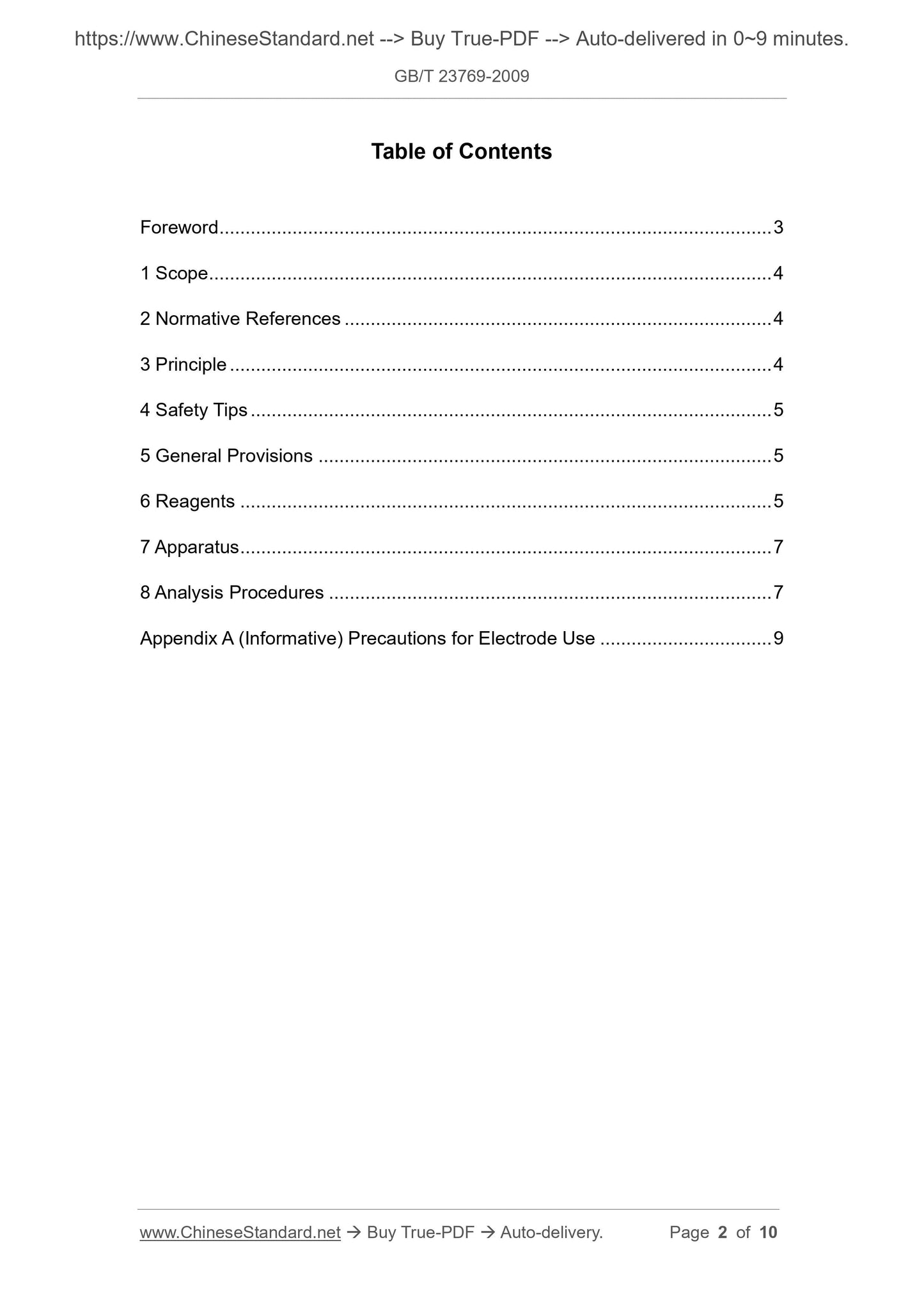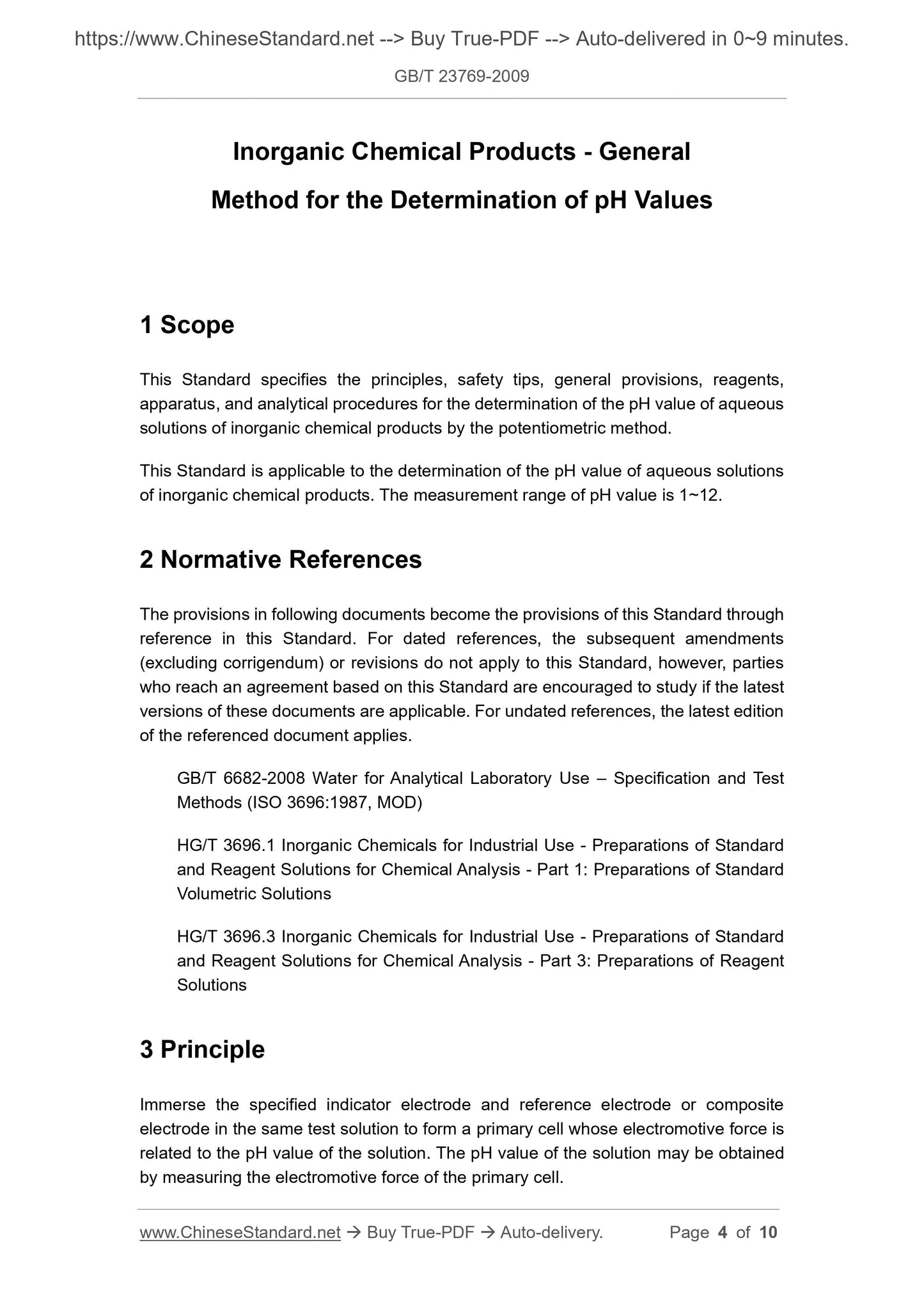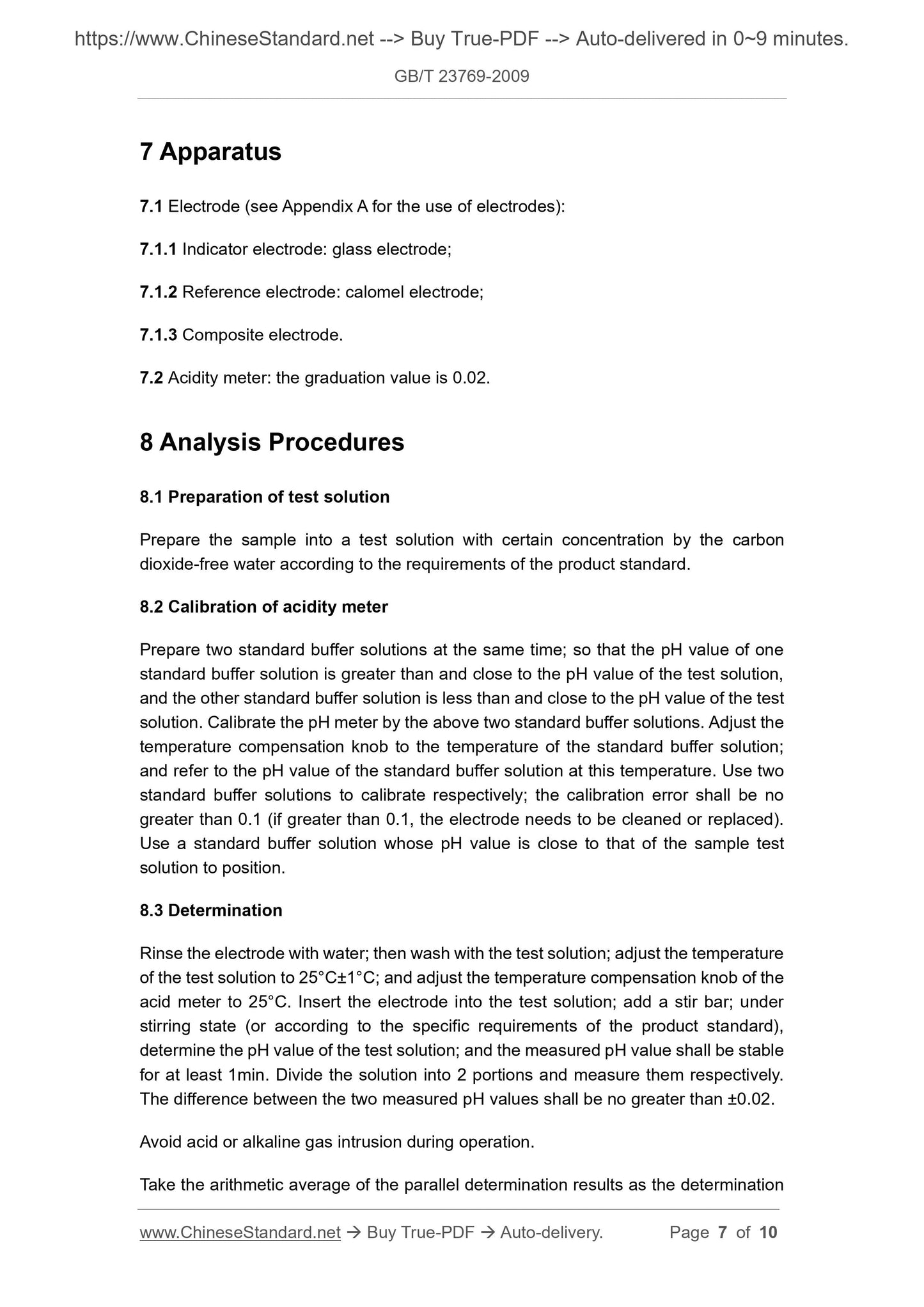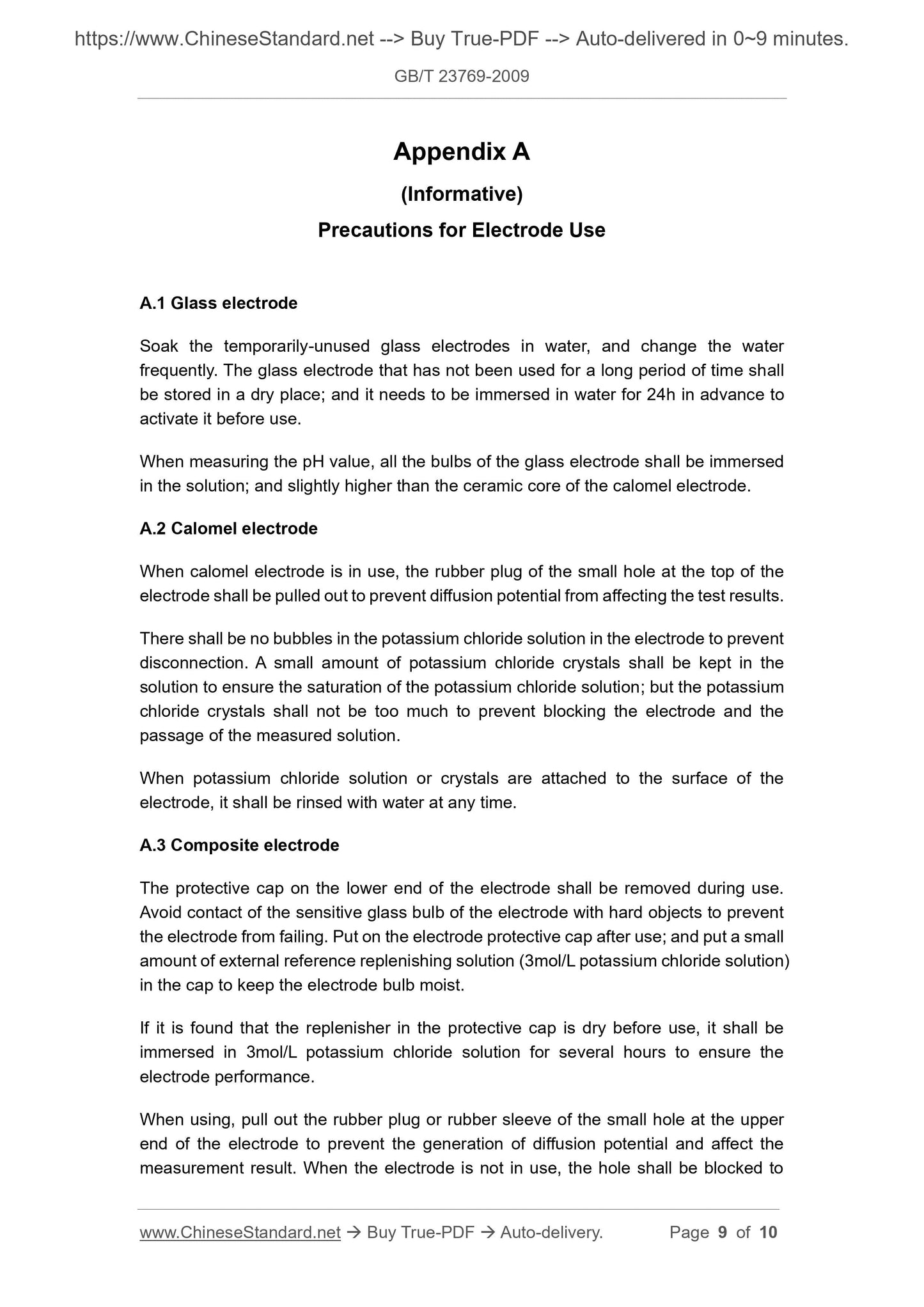1
/
of
5
www.ChineseStandard.us -- Field Test Asia Pte. Ltd.
GB/T 23769-2009 English PDF (GB/T23769-2009)
GB/T 23769-2009 English PDF (GB/T23769-2009)
Regular price
$130.00
Regular price
Sale price
$130.00
Unit price
/
per
Shipping calculated at checkout.
Couldn't load pickup availability
GB/T 23769-2009: Inorganic Chemical Products - General Method for the Determination of pH Values
Delivery: 9 seconds. Download (and Email) true-PDF + Invoice.Get Quotation: Click GB/T 23769-2009 (Self-service in 1-minute)
Newer / historical versions: GB/T 23769-2009
Preview True-PDF
Scope
This Standard specifies the principles, safety tips, general provisions, reagents,apparatus, and analytical procedures for the determination of the pH value of aqueous
solutions of inorganic chemical products by the potentiometric method.
This Standard is applicable to the determination of the pH value of aqueous solutions
of inorganic chemical products. The measurement range of pH value is 1~12.
Basic Data
| Standard ID | GB/T 23769-2009 (GB/T23769-2009) |
| Description (Translated English) | Inorganic Chemical Products - General Method for the Determination of pH Values |
| Sector / Industry | National Standard (Recommended) |
| Classification of Chinese Standard | G10 |
| Classification of International Standard | 71.060.01 |
| Word Count Estimation | 8,859 |
| Date of Issue | 2009-05-13 |
| Date of Implementation | 2010-01-01 |
| Quoted Standard | GB/T 6682-2008; HG/T 3696.1; HG/T 3696.3 |
| Regulation (derived from) | PRC National Standard Approval Announcement 2009 No.6 (Total No.146) |
| Issuing agency(ies) | General Administration of Quality Supervision, Inspection and Quarantine of the People's Republic of China, Standardization Administration of the People's Republic of China |
| Summary | This standard specifies the principle of measuring the pH of the aqueous solution of inorganic chemical products, electricity counterpoint, safety tips, general provisions, reagents, instruments and equipment, analysis steps. This standard applies to the determination of inorganic chemical products aqueous solution pH. Determination of pH in the range of 1 to 12. |
Share
